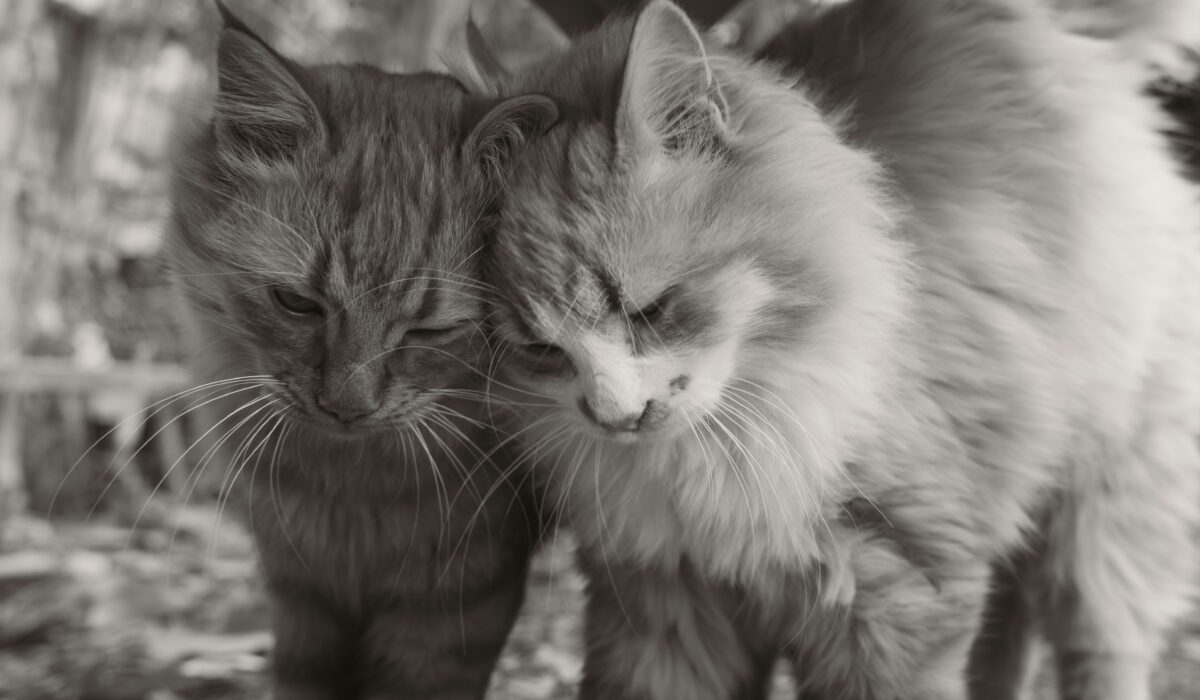Do Cats Have Emotions? A Fun Guide to Your Cat’s Feelings
Ever wondered if your kitty actually loves you back, or if they’re just using you for treats? Spoiler alert: cats are way more emotional than you might think!
If you’ve ever caught your cat staring at you with those big, mysterious eyes and wondered what’s going on in that fuzzy little head, you’re not alone. For years, people have debated whether cats actually have emotions or if they’re just tiny, adorable robots programmed to knock things off tables.
Well, grab your favorite coffee (and maybe give your cat a little chin scratch), because we’re about to dive deep into the fascinating world of feline feelings. Trust me, after reading this, you’ll never look at your cat’s slow blink the same way again!
What Science Says About Cat Emotions
Let’s start with the good stuff – what the experts tell us. Modern research has shown that cats absolutely do have emotions, and they’re more complex than many people realize. In fact, cats have similar brain structures to humans when it comes to processing emotions, including the limbic system that handles feelings like fear, pleasure, and attachment.
Dr. Marc Bekoff, a renowned animal behaviorist, explains that cats experience what scientists call “primary emotions” – things like joy, fear, anger, and affection. These aren’t just automatic responses; they’re genuine emotional experiences that influence how your cat interacts with the world (and with you!).
The really cool part? Cats can even experience some “secondary emotions” like jealousy and grief. Ever notice how your cat acts differently when you bring home a new pet? That’s not just territorial behavior – there might be some genuine emotional processing happening there.
Do Cats Feel Love Like Humans?
This is probably the question every cat parent wants answered: Does my cat actually love me, or am I just the human who operates the can opener?
The answer is both heartwarming and hilarious. Yes, cats can form deep emotional bonds with their humans, but they express love very differently than we do. While your cat might not write you love letters or bring you flowers, they have their own special ways of saying “I love you.”
Here’s the thing about cat love – it’s often more subtle than dog love. Dogs will practically throw themselves at you with excitement, but cats? They’re more like that cool friend who shows they care by sharing their favorite playlist with you. Your cat’s love might look like:
- Bringing you their favorite toy (or a dead mouse – hey, it’s the thought that counts!)
- Slow blinking at you (this is basically a cat kiss!)
- Headbutting you gently
- Purring when you’re around
- Following you from room to room
- Sleeping on your bed (or your face at 3 AM)
The science backs this up too. When cats interact with their favorite humans, they release oxytocin – the same “love hormone” that humans produce when bonding with loved ones. So yes, your cat’s feelings for you are biochemically real!
Common Cat Emotions Explained (With Examples)
Let’s break down the main emotions your cat experiences and how you might recognize them:
Happiness and Contentment
Happy cats are pretty easy to spot once you know what to look for. They’ll have relaxed body language, might knead with their paws (like they’re making biscuits on your lap), and of course, they’ll purr. A content cat often has half-closed eyes and might even do that adorable thing where they stick their tongue out just a little bit.
Fear and Anxiety
Scared cats make themselves small – they’ll crouch low, pin their ears back, and might hide. Their pupils dilate, and they might hiss or growl. Some cats freeze when they’re afraid, while others bolt for the nearest hiding spot. If your cat is stressed, they might also over-groom themselves or stop using the litter box.
Anger and Frustration
An angry cat is pretty unmistakable. They’ll puff up their fur, arch their back, and might swish their tail aggressively. They could hiss, growl, or even swat. Sometimes cats get frustrated when they can’t reach something they want (like that bird outside the window), and they might redirect that energy by suddenly pouncing on your feet.
Sadness and Grief
Yes, cats can feel sad! They might become less active, lose their appetite, or vocalize more (or less) than usual. Cats can even grieve the loss of another pet or a family member. They might search for the missing individual or seem more clingy than usual.
Curiosity and Excitement
Curious cats have alert ears, bright eyes, and might approach new things cautiously but with obvious interest. When they’re excited (maybe it’s dinner time!), they might chirp, meow more, or even do little jumps or runs.
Jealousy and Possessiveness
Oh yes, cats can definitely get jealous! If you’re paying attention to another pet, a new baby, or even your phone, your cat might insert themselves into the situation, knock things over, or act out in other ways. They’re basically saying, “Hey, remember me? I’m supposed to be the center of your universe!”
How Cats Show They’re Happy, Sad, or Stressed
Understanding your cat’s emotional state is like learning a new language – once you get the hang of it, communication becomes so much clearer!
Signs of a Happy Cat:
- Purring (though not always – some cats purr when stressed too)
- Kneading with their paws
- Slow blinking
- Relaxed posture
- Playful behavior
- Good appetite
- Normal grooming habits
- Seeking out your company
Signs of a Sad Cat:
- Hiding more than usual
- Changes in appetite (eating more or less)
- Less grooming or over-grooming
- Increased vocalization or becoming unusually quiet
- Sleeping more than normal
- Less interest in play or interaction
- Changes in litter box habits
Signs of a Stressed Cat:
- Excessive grooming (sometimes to the point of creating bald spots)
- Hiding or avoiding interaction
- Aggressive behavior
- Changes in eating habits
- Inappropriate elimination
- Excessive vocalization
- Pacing or restlessness
- Dilated pupils
Can Cats Feel Their Owner’s Emotions?
Here’s where it gets really interesting – cats are incredibly good at reading human emotions. They’re like little furry therapists who happen to knock things off your desk.
Many cat owners report that their cats seem to know when they’re upset. Your cat might come over and purr on your lap when you’re sad, or they might give you extra head bonuses when you’re stressed. This isn’t just coincidence – cats are actually quite skilled at picking up on human emotional cues.
They notice changes in your voice, your body language, and even your scent (cats have an amazing sense of smell). Some cats will even mirror their owner’s emotions to some degree. If you’re anxious, your cat might become more anxious too. If you’re calm and relaxed, your cat is more likely to be chill as well.
This emotional connection goes both ways too. Studies have shown that cats can actually help reduce their owner’s stress levels and blood pressure. So while you’re busy worrying about your cat’s emotional well-being, they might actually be taking care of yours!
Do Cats Get Emotionally Attached to You?
The short answer is: absolutely! But cat attachment looks different from dog attachment, and it’s often more sophisticated than people give it credit for.
Cats can form what researchers call “secure attachment” with their humans. This means they see you as a safe home base – they’re comfortable exploring and playing when you’re around, but they also come to you for comfort when they’re scared or stressed.
Some signs that your cat is emotionally attached to you:
- They follow you around the house (hello, bathroom supervisor!)
- They greet you when you come home
- They seek you out for comfort when they’re scared
- They bring you “gifts” (yes, even those questionable dead things)
- They sleep near you or on your bed
- They seem to prefer your company over other people’s
- They get anxious when you’re away for long periods
The really sweet part? Cats often develop their strongest attachments to the person who feeds them, plays with them, and respects their boundaries. It’s not just about the food – it’s about the relationship you build together.
Your Cat’s Emotional World
So, do cats have emotions? The answer is a resounding yes! Your cat experiences a rich emotional life that includes love, joy, fear, sadness, and even complex feelings like jealousy and grief.
Understanding your cat’s emotions isn’t just fascinating – it’s practical too. When you can recognize what your cat is feeling, you can respond appropriately. A stressed cat needs a calm environment and maybe some extra hideouts. A sad cat might need more attention and play time. A happy cat… well, a happy cat just needs you to keep doing whatever you’re doing!
The next time your cat gives you a slow blink, remember – that’s their way of saying “I love you.” And when they knock your pen off your desk for the fifteenth time, well, that might just be their way of saying “pay attention to me” (though it could also be because they’re cats, and knocking things over is basically their job).
Your cat’s emotional world is complex, beautiful, and sometimes a little bit mysterious – kind of like cats themselves. But one thing’s for sure: the bond between you and your feline friend is real, it’s emotional, and it’s pretty darn special.
Want to learn more about your cat’s emotional world? Check out our related articles on how cats show love, reading cat body language, and understanding feline behavior. Your cat will thank you for it – probably with a head bonk and a purr!



